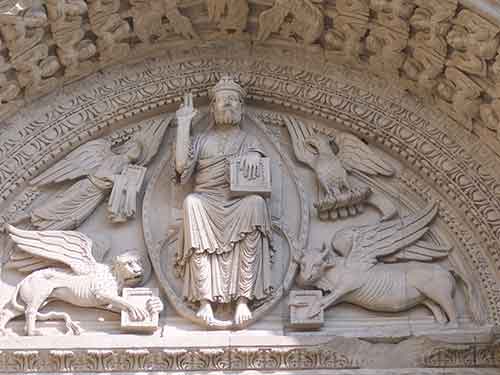
The church’s new year begins on Advent Sunday, December 1. In the three year lectionary the focus is on St Luke’s Gospel.
In your community, and in your own life, is planning underway how to best make use of this year’s lectionary? It is just plain stubbornly irritating, especially if your denomination (like mine) has agreed we will together use the lectionary, to abandon it for a “teaching series” on the letter to the Romans in 2025, for example, when the lectionary wonderfully provides for such a series in 2026. Plan!
Ordinary time begins (Northern Winter; Southern Summer) with the second reading being semicontinuously from 1 Corinthians. [NZ Anglican Lectionary calls these Sundays 1st – 4th Sundays of the Epiphany followed by 5th – 8th Sunday in Ordinary Time]
From Ash Wednesday through the Day of Pentecost there are several readings from John supplementing Luke.
During the season of Easter, semicontinuous selections are read from the book of Revelation.
Ordinary Time after the Day of Pentecost (Northern Summer & Autumn; Southern Winter & Spring) has semicontinuous readings of the prophets, chosen in chronological order and highlighting Jeremiah. The other set of readings is selected from throughout the Hebrew Scriptures for their association with the gospel of the day. The second readings are semicontinuous selections, chosen mainly from Galatians, Colossians, 1 and 2 Timothy, and 2 Thessalonians.
As usual, the final Sundays in Ordinary Time focus on eschatological themes and the reign of Christ.
If you have not been using the three year Revised Common Lectionary, might this be your year to begin? Especially if you have agreed, vowed, and signed that this is what you will do (as I have)! If you have been reducing the number of readings provided, might this be the year to lessen a bit of your own stuff, and gather, as a community, around the fuller provision of three readings and a psalm.
The devil, Screwtape, rejoices that the vicar
has undermined many a soul’s Christianity. His conduct of the services is also admirable. In order to spare the laity all “difficulties” he has deserted both the lectionary and the appointed psalms and now, without noticing it, revolves endlessly round the little treadmill of his fifteen favourite psalms and twenty favourite lessons. We are thus safe from the danger that any truth not already familiar to him and to his flock should ever reach them through Scripture. The Screwtape Letters Chapter XVI C.S. Lewis
This is not some clarion call for liturgical rubrical fundamentalism! This is an invitation and challenge. Liturgy, worship is not, should not be, the personal possession of the pastor. It is the common prayer of us all. Laity are not just consumers of the pastor’s provision! Of course there will be (rare) contexts when the set readings are just not appropriate for that particular service. Of course there will be (rare) contexts where cutting the readings back to two and a psalm is the best decision. But, even looking around local churches that have abandoned their agreement and construct their own reading system, I have yet to see one of them which improves on what we have agreed to.
Off this website:
Introduction to Year C by Richard Bauckham
image source
Arles, the church of St. Trophime – tympanum. The west portal presents the story of the Apocalypse. Christ is seated in majesty with the symbols of the Evangelists around him; the angel of St. Matthew, the lion of St. Mark, the bull of St. Luke, and the eagle of St. John.
Do follow:
The Liturgy Facebook Page
The Liturgy Twitter Profile
The Liturgy Instagram
and/or sign up to a not-too-often email


